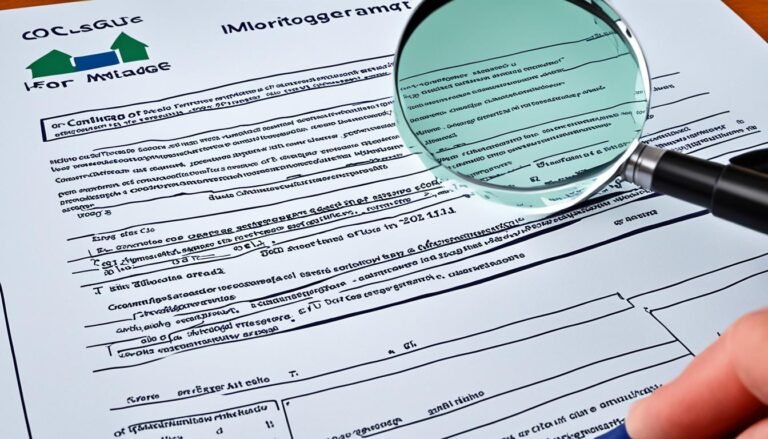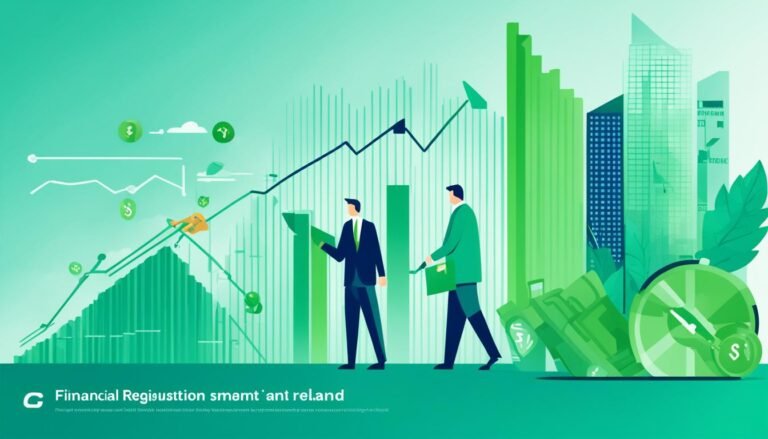Investor Protection and Market Transparency: Understanding MiFID II
Did you know European companies spent about $2.1 billion getting ready for MiFID II? The European Union introduced MiFID II in 2018 to revamp financial rules. This change makes financial dealings more standard and boosts protection for people who invest.
MiFID II focuses on making markets clearer and trustworthier. It requires strict reports, controls on trading, and better record-keeping. These steps aim to stop unfair practices and make sure investors are safe.
MiFID II looks out for investors with over 97 detailed rules, up from the old MiFID’s 73 rules. New parts include making sure all companies use the same time clock (Article 50). There’s also a rule that stops anyone from offering rewards that might influence decisions (Article 24). These show just how thorough the changes are. Plus, there are strict rules and technical guidelines to make sure everyone follows the new rules closely.
Key Takeaways
- MiFID II compliance involved a substantial $2.1 billion investment by European companies.
- The directive introduces an enhanced regulatory framework with 97+ articles.
- Key areas include business clock synchronization and banning inducements to ensure transparency.
- MiFID II sets stringent reporting and record-keeping requirements.
- Emphasis on regulated trading platforms and curbing opaque “dark pool” trading.
Stay tuned to learn more about MiFID II’s rules and how they affect the financial world. Knowing these changes is vital for finance experts and investors.
Introduction to MiFID II and Its Importance
MiFID II shapes how financial markets are regulated now. It came into effect in January 2018, building on MiFID, which started in 2007. It improves old rules and fits the post-crisis world better.
Origins of MiFID II
MiFID II started to make markets cleaner and fill the gaps from MiFID I. MiFID I was too narrow as markets changed. So, MiFID II covers more financial areas to watch over things better.
Key Objectives
MiFID II aims to make the market clearer, protect investors more, and be fair. It sets rules for how businesses must treat their clients and the information they must share. It also makes sure deals are open and that some trading must happen on a certain platform.
Moreover, MiFID II makes businesses report their deals better.
Impact on the Financial Sector
MiFID II changed how trading and investing happen. It makes the market cleaner and protects investors more. It affects both companies in Europe and those around the world.
| Aspect | MiFID I (2007) | MiFID II (2018) |
|---|---|---|
| Implementation Year | 2007 | 2018 |
| Regulatory Scope | Narrower Coverage | Expanded Coverage |
| Investor Protection | Limited | Improved & Aligned with Retail Clients |
| Market Transparency | Basic Requirements | Enhanced Pre- and Post-Trade Transparency |
| Business Conduct Rules | Less Comprehensive | Detailed Conduct Rules Introduced |
| Trading Obligations | Not Mandatory | Mandatory On-Venue Trading |
Learning about MiFID II helps us understand its major effects. It’s key for handling financial rules today. MiFID II strengthens keeping the market clean and protecting investors.
Key Regulations Under MiFID II
MiFID II was adopted by the European Parliament on April 15, 2014. This law aimed to make markets safer and protect investors better. It started on January 3, 2018, changing many things in finance. These changes include rules about how companies handle conflicts of interest, protect client money, and develop financial products.
MiFID II made big changes, especially by making trading more clear. It includes rules for all types of trading, like high-speed trading. This ensures markets are fair for everyone. It also makes sure when you buy or sell something, you’re getting the best deal possible.
This law also talks about some specific types of investments. For example, some investments now have to go through checks to make sure they’re safe. And when you buy some types of investments, this must be reported to the people in charge. All these rules try to make sure people’s investments are protected well.
MiFID II affects many parts of the financial world. It covers things like buying and selling stocks, managing money for others, and giving advice on what to invest in. It applies to a wide range of financial products and services. And it categorizes the different types of people who use these services to make sure everyone gets the right protections.
Here’s a more detailed breakdown of the MiFID II reforms:
| Aspect | Details |
|---|---|
| Adoption Date | April 15, 2014 |
| Application Date | January 3, 2018 |
| Scope of Products | Transferable Securities, Derivatives, Collective Investment Schemes, Emission Allowances, Structured Deposits |
| Client Categories | Retail Clients, Professional Clients, Eligible Counterparties |
| Key Regulations | Conflicts of Interest, Client Asset Protection, Product Governance |
| Legal Articles | Article 17 (Algorithmic Trading Rules), Article 27 (Best Execution) |
| Transparency Extensions | Non-Equity Instruments, Equity-like Instruments |
| Investment Services | Dealing, Underwriting, Portfolio Management, Investment Advice |
| Reporting Obligation | Increased Scope for Transaction Reporting |
Transparency in Trading: Enhancing Market Integrity
MiFID II works to make trading clearer. It started on January 3, 2018. This directive helps make trading more open, protect investors, and strengthen how markets work. It touches many areas such as stocks, bonds, commodities, and more, all traded in the EU.
Regulated Trading Platforms
MTFs must now show prices regularly. This makes the market easier to understand. Rules make sure all trading is reported in detail. This new approach makes markets more honest.
Reporting Requirements
MiFID II makes companies tell regulators about their trades every day. This helps keep a close eye on the market. Companies also must warn if a portfolio loses a lot of value, to keep everything in check.
Best Execution Policies
MiFID II also focuses on getting the best deal for clients. It requires investment firms to use the best price sources. By doing so, clients get a fairer deal. This system helps reduce any possible bad practices.
MiFID II gives more power to watch over trading. It allows NCAs to step in if rules are broken. Penalties keep the market fair and running smoothly. These steps make the trading world more trustworthy.
Investor Protection and Market Transparency: Understanding MiFID II
MiFID II came into effect on 3 January 2018. It replaced MiFID I and made big moves to protect investors and make markets more clear in the European Union. Now, this law covers more types of financial groups, including investment firms and wealth managers, among others. It also standardizes Cross-Border Investment Protection in Europe.
Key to MiFID II are its tough rules for how companies are run. It says top managers must really watch over their firms. These rules are meant to make everything from stocks to other finance tools more out in the open. By doing this, MiFID II wants to make sure people who invest their money are looked after well.
MiFID II also made a new trading place called the Organized Trading Facility (OTF). It’s for non-stocks, like bonds and more. This adds to the rule of sharing more info than before (compared to MiFID I). With new tools like emissions allowances in the mix, MiFID II helps keep an eye on many markets to make sure everyone plays fair.
In the world of fast trading, MiFID II set rules to keep things fair. It put in place anti-cheating steps for those who trade a lot using software. This stops situations where quick trading might hurt how fair the market is. The people in charge can even stop certain investments from being sold if there’s a risk to investors.
Following MiFID II means firms have to do lots of paperwork. They have to report on their money, what they do, and how much they save for hard times. It’s complex, making sure they have enough cash ready. This is especially important for certain types of firms, which need to keep a lot of their money ready at all times.
MiFID II is all about doing the best for those who invest. It says investment advice must have customers’ best interests at heart. This means no hidden payments for advice or managing money. It’s a big change that makes sure investing is fair and clear for all.
Conclusion
In short, MiFID II has changed the financial scene across the EU. It has paved the way for more open markets, better protection for investors, and honesty within the markets. It makes sure that companies that handle your money must put your interests first. These financial companies now have to follow strict rules on how they do business, design their products, and handle your investments.
It’s now very important for financial companies to follow MiFID II carefully. This law is as important as the big changes seen in the UK before, like the RDR. MiFID II’s rules are seen as a response to the first MiFID rules, improving on past lessons. Financial firms have to update their ways, keep better records, and watch for any new rules, to make sure they’re following the law and best practices.
Even though MiFID II is tough, it has many positives. Companies that obey these rules help make the trading world safer and more reliable, building trust among investors. The ESMA is working hard to keep up with new financial trends and tech, making sure the market is fair and stable. People in the financial world are working together, looking at how to protect investors and use digital tech better by March 2024, aiming for fair and clear finance for everyone.
Source Links
- MiFID II | European Securities and Markets Authority
- MiFID II: Definition, Regulations, Who It Affects, and Purpose
- ESMA35-43-349 Q&As on MiFID II and MiFIR investor protection and intermediaries topics
- MiFID II / MiFIR series
- Deutsche Börse Group – MiFID I to MiFID II
- Microsoft Word – BNP Paribas – MiFID II Overview and Investor Protection – Factsheet Nov 2016.docx
- The Impact of MiFID II on EU Financial Markets – Global Relay
- Understanding MiFID II
- MiFID II Directive Summary For Compliance Professionals | Blog
- MiFID II Solutions | ICE Data Services
- MiFID II/R » ICMA
- MIFID Firms | Central Bank of Ireland
- Investor protection under MiFID II
- ESMA35-43-3682 Discussion Paper on MiFID II investor protection topics linked to digitalisation
- Implementation of MiFID II investor protection provisions by private banks within the European Union








